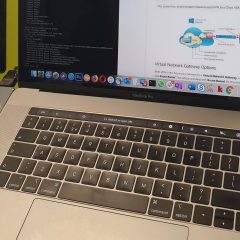How Do I Find/Change My IP Address?
KB ID 0000208 What’s an IP address? An IP address is the address used on a network to find your PC, Server, Laptop, or Printer etc. It’s the networking equivalent of your house number and post code (or Zip Code for visitors from over the pond). Do you want your PUBLIC or PRIVATE IP address? As we started to run out of addresses, there were a number of solutions that we came up with, one you will see below (DHCP) the other...
macOS: Find your DHCP Server Address
KB ID 0001587 Problem In Windows this is easy to find, ‘ipconfig /all’ will tell you 🙂 On macOS it’s not so simple. Solution First you need to know which network card we are talking about! Your wireless network card is nearly always en0 (that’s a zero), if you are on a wired connection simply run ifconfig and find the right network card. to double check you can run; ipconfig getifaddr en0 Then to see your DHCP...
Windows – ipconfig – Stop the tunnel adaptors showing
KB ID 0000024 Problem Windows ipconfig – annoyingly shows lots of info you don’t want to see, so you have to scroll to the top of the list to see your IP address all the time. Solution 1. Stat > run > devmgmt.msc 2. View > Show Hidden Devices. 3. Expand Network Adaptors. 4. Disable all that start with isatap 5. Make sure your comms still work. 6. Re-run ifconfig. Related Articles, References, Credits, or External...



